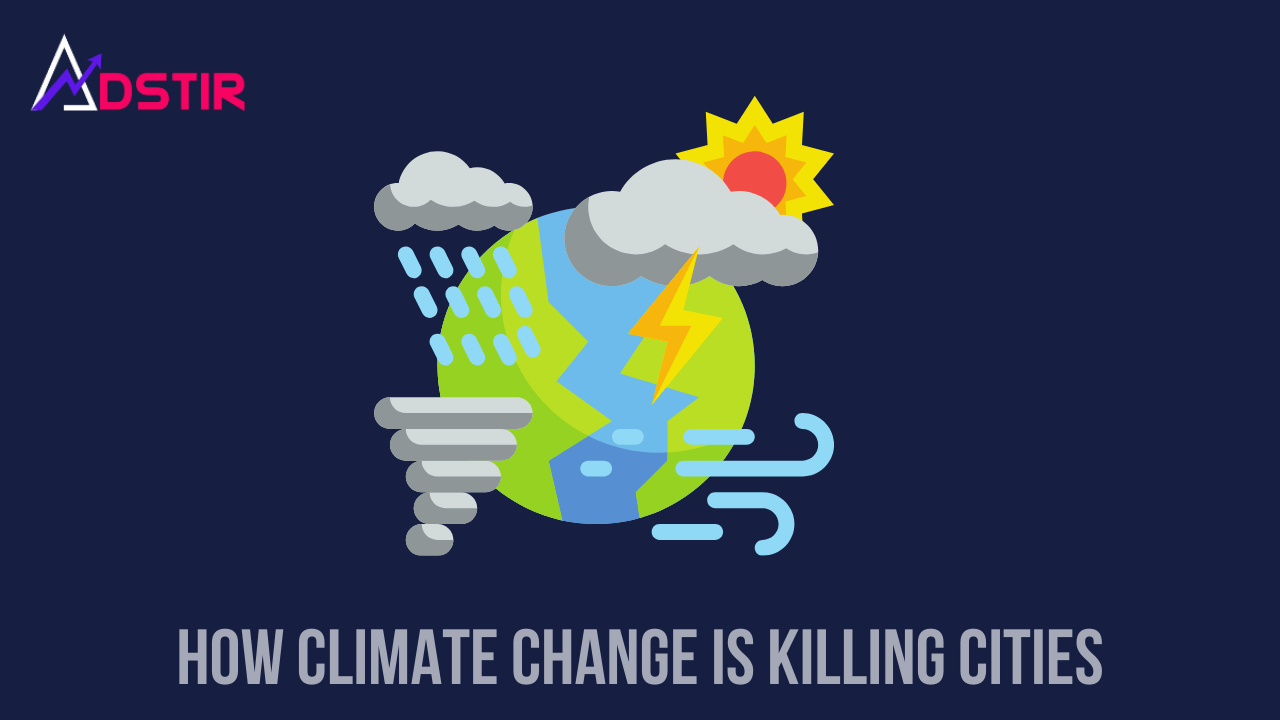How Climate Change Is Killing Cities – Climate change refers to significant and long-term changes in the Earth’s climate, particularly rise in global average temperatures. Such shifts can be natural, due to changes in the sun’s activity or large volcanic eruptions. But human activities have been the main factor of climate change, primarily due to the burning of fossil fuels like coal, oil and gas. It is caused by certain gases, like carbon dioxide, build up in the atmosphere and trap heat from the sun, causing the planet to warm up.
Effects of climate change on cities
Rising Temperatures and Heatwaves
Cities are experiencing extreme heat due to the urban heat island effect. Concrete and asphalt absorb heat, making urban areas much hotter than surrounding regions. This leads to heat-related illnesses, increased energy demand for cooling, and damage to infrastructure like roads and bridges.
Flooding and Rising Sea Levels
Coastal cities are at high risk of flooding due to rising sea levels and heavy rainfall. Cities like Miami and Jakarta face frequent inundation, damaging homes and businesses. Floodwaters also contaminate drinking water supplies, increasing health risks.
Extreme Weather Events
Climate change is intensifying hurricanes, typhoons, wildfires, and storms. Cities are suffering from stronger and more frequent natural disasters that destroy infrastructure, displace residents, and require costly rebuilding efforts.
Water Shortages and Droughts
Many cities are running out of fresh water due to declining rainfall and overuse. Water crises in places like Cape Town and Chennai have forced residents to ration water, threatening sanitation and public health.
Economic Decline
Climate-related disasters cause billions of dollars in damages, leading to rising insurance costs, job losses, and economic instability. Governments are forced to spend large amounts on recovery instead of investing in public services.
Health Problems and Air Pollution
Poor air quality caused by wildfires, heat, and pollution leads to respiratory diseases, heart problems, and heatstroke. The spread of diseases is also increasing due to changing climate conditions, affecting urban populations.
Damage to Infrastructure
Roads, bridges, power grids, and public transport systems are being weakened by extreme weather and temperature fluctuations. Frequent repairs and maintenance are becoming costly and unsustainable for cities.
Mass Migration and Displacement
Rising sea levels, heatwaves, and water shortages are forcing people to leave cities in search of safer environments. This creates overcrowding in other regions and puts pressure on resources and housing.
Loss of Green Spaces
Deforestation, urban expansion, and extreme weather are reducing the number of parks and trees in cities. This worsens air quality, increases temperatures, and removes natural flood protection.
Food and Supply Chain Disruptions
Climate change affects agriculture and food production, leading to shortages and rising prices in urban areas. Extreme weather also disrupts transportation networks, delaying the delivery of essential goods.
Preservation of cities
Following are the ways through which cities can be saved;
- Investing in Green Infrastructure: Planting trees, creating green spaces, and using reflective building materials to reduce urban heat.
- Improving Flood Defenses: Building stronger drainage systems and sea walls to protect coastal cities.
- Switching to Renewable Energy: Reducing reliance on fossil fuels to lower carbon emissions.
- Better Water Management: Recycling wastewater and using desalination technology in water-scarce regions.
- Stronger Climate Policies: Governments must enforce stricter regulations on pollution and carbon emissions.
Conclusion
In conclusion, climate change is a serious and escalating threat to cities worldwide, impacting their infrastructure, economies, and residents through extreme heat, flooding, air pollution, water scarcity, and more. These challenges disproportionately affect vulnerable populations and strain urban systems, leading to significant social and economic costs. The good news is that solutions exist. With better urban planning, investment in renewable energy, and stronger climate policies, cities can adapt and thrive. However, time is running out, and the world must act now to prevent irreversible damage.
Also Read: Chickenpox (varicella): Symptoms, treatments and more
